Introduction
Automated code review tools have revolutionized the software development landscape by offering a more efficient alternative to traditional manual code reviews. These tools utilize advanced algorithms and machine learning techniques to scrutinize code for errors, bugs, and security vulnerabilities, surpassing human capabilities in terms of speed and accuracy. With AI-driven tools like GitHub Copilot and ChatGPT, the once static domain of code review is now on the brink of transformation, embracing AI's potential to redefine software development practices.
These automated tools address common coding challenges faced by developers, providing targeted assistance and reducing the time and effort required for problem-solving. However, it is important to balance the power of AI with human oversight to ensure accurate and secure code generation. In essence, automated code review tools streamline the development process, promote coding standards, and result in robust and reliable software solutions.
The integration of AI in code review processes is focused on maximizing efficiency and productivity, paving the way for a new era in software development.
What is Automated Code Review?
Automated code review tools represent a significant shift in the software development landscape, offering a more efficient alternative to traditional manual code reviews. These tools serve as digital aides that scrutinize code for errors, potential bugs, and security vulnerabilities, providing insights that can enhance the quality of the final software product.
Utilizing advanced algorithms and machine learning techniques, automated code review tools can examine vast quantities of code with precision and speed, far surpassing human capabilities. This not only accelerates the review process but also ensures a higher degree of accuracy, catching issues that might escape the human eye. With the rise of AI-driven tools like GitHub Copilot and ChatGPT, the once static domain of code review is now on the cusp of transformation, embracing AI's potential to redefine the efficiency of software development practices.
From the perspective of software developers, automated code review tools address a variety of common coding challenges. These include navigating test case failures, managing unexpected code output, extending existing functionalities, and fixing defects. In each instance, automated tools can provide targeted assistance, reducing the time and effort required for problem-solving.
Despite the promise of AI in revolutionizing software development, it is crucial to recognize its limitations. AI can sometimes confidently provide incorrect responses or produce code with vulnerabilities. Therefore, a balanced approach that combines Ai's computational power with human oversight remains essential.
This ensures that even as code is generated or reviewed by AI, developers retain a clear understanding of what is being built and can intervene when necessary.
In essence, automated code review tools not only streamline the development process but also promote adherence to coding standards and compliance. This results in software that is robust, secure, and easier to maintain, ultimately benefiting businesses and end-users alike with reliable and effective software solutions.
Benefits of Automated Code Review
The integration of AI-driven tools in software development has been transformative, particularly in the realm of automated code reviews. These tools have surpassed traditional methods, offering a more efficient path to maintaining code quality. They pinpoint errors, enforce coding standards, and uphold best practices, ensuring that the codebase remains robust and reliable.
Moreover, they facilitate a collaborative environment by providing uniform feedback that streamlines the management of code alterations, enhancing team synergy and productivity.
M&T Bank's initiative to implement Clean Code standards exemplifies the critical need for high-quality coding practices in sectors like banking, where digital transformation is rapidly evolving. Automated code reviews play a pivotal role in this scenario, preventing costly errors that could lead to severe security breaches and reputational harm.
GitHub Copilot and similar AI programming assistants have demonstrated significant benefits in terms of productivity. For example, they offer real-time coding suggestions that span a wide spectrum of productivity metrics—including task time, product quality, and cognitive load—while also enhancing enjoyment and fostering learning among developers.
The impact of such AI tools on the software development lifecycle is undeniable. They have become a foundational element for countless developers, shaping a new era in coding efficiency. These advancements signal a shift in the industry, pushing the boundaries of what's possible with AI at the helm of code generation and review processes.
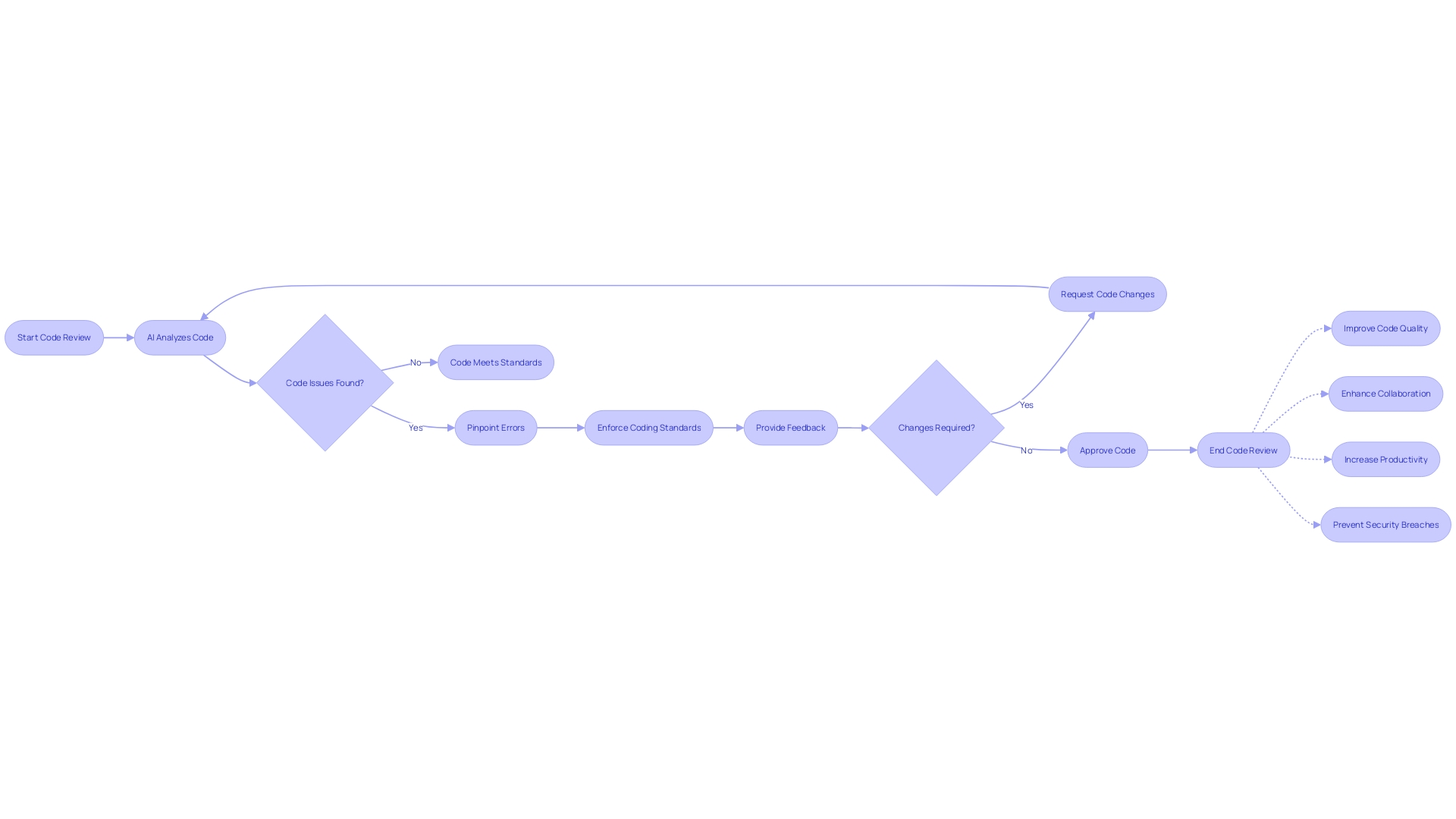
Types of Automated Code Review Tools
Automated code analysis and review tools are essential in today's software development landscape, as they offer varied approaches to improving code quality and security. Static analysis and linting tools examine code without executing it, to identify potential errors and enforce coding standards. Security-focused tools scrutinize code for vulnerabilities, helping to prevent future exploits.
The landscape of these tools is evolving with AI innovations like GitHub Copilot and ChatGPT, which have made significant strides in code generation. However, the code review process still relies on traditional methodologies, often resulting in slow and error-prone outcomes. Recognizing the need for efficiency, automated tools are stepping in to streamline the review process, with AI integration promising to reshape the industry by offering improved performance and the potential for new research directions.
The quality of a software system is determined by factors such as trustworthiness, dependability, and resilience. These aspects are crucial in crafting a system that operates optimally within its intended environment. As the industry navigates through these transformative times, it's clear that the integration of Static Code Analysis (SCA) tools can significantly contribute to a culture of quality within development teams and organizations.
By addressing common development issues, such as test case failures, unexpected code outputs, and the need for feature enhancements, SCA tools provide a structured approach to maintaining high-quality code standards. This is paramount for any software system's foundation, as neglecting these standards can lead to maintenance challenges, system crashes, and security risks. As we continue to explore these tools, it's essential to understand their roles and capabilities to fully leverage their benefits in enhancing code review processes.
Static Analysis and Linting Tools
In the realm of software development, static analysis and linting tools serve as vigilant sentinels, scrutinizing source code without the need to execute it. They are adept at unearthing a plethora of potential pitfalls such as coding blunders, dormant variables, and the subtle yet pervasive code smells. By providing automated critiques on code quality, these tools are instrumental in upholding coding standards and fostering a culture of excellence.
As developers navigate the ever-evolving landscape of software engineering, the quest for automated solutions to streamline tasks has been relentless. They frequently grapple with challenges like test case failures that stem from logical errors or assertions gone awry, and outputs that fall short of expectations without any overt error messages. Moreover, the expansion of existing functionalities or the integration of novel features often looms as a daunting task due to uncertainties in implementation strategies.
The advent of sophisticated large language models (LLMs) such as GPT-4o, Claude-3.5, and Doubao Pro has propelled us toward this automated future. These LLMs have catalyzed significant strides in code generation, program repair, and a host of other development activities. LLM-based agents, with their ability to perceive environments, manipulate tools, and make autonomous decisions, are at the forefront of this revolution, capturing the attention and imagination of both academia and industry.
Amidst this backdrop of innovation, the dialogue within the .NET community thrives, with events like JetBrains. NET Day Online '23 illuminating the path ahead. Here, enthusiasts and experts alike delve into the nuances of C#, F#, Blazor, and more, sharing insights that shape the future of .NET development.
The fusion of these tools and insights underscores the multifaceted nature of system quality - a tapestry woven from metrics that gauge a system's trustworthiness, dependability, and resilience. By comprehending and applying these metrics at a granular level, such as the unit level of a function or class, developers can tailor their systems to best suit their operational environments.
Acknowledging the intricate interplay between code security, reliability, and quality, experts advocate for ecosystems that prioritize safe coding practices to mitigate common defects. This approach is echoed by industry leaders who emphasize the importance of maintaining a robust codebase, free from the vulnerabilities that plague our digital infrastructure. As the community of developers continues to expand, with a professional cohort numbering around 13.4 million by 2023, the imperative to embrace tools and practices that elevate code quality has never been more critical.
Security-Focused Automated Code Review Tools
Automated code analysis tools equipped with security-focused features are increasingly becoming a cornerstone in the realm of software development. Not only do they scrutinize code to uncover common security issues like injection attacks, cross-site scripting (XSS), and insecure data practices, but they also play an instrumental role in upholding the integrity of software applications. By integrating continuous code review and early security measures into the development lifecycle, these tools champion a proactive stance on software security.
The founders of DryRun Security, James Wickett and Ken Johnson, epitomize the industry's shift towards empowering developers with the right tools for security and quality. Wickett, as CEO, and Johnson, leveraging his experience from GitHub, underscore the significance of automated solutions in a landscape where developers are increasingly security-conscious.
In line with this, the application of AI and Large Language Models (LLMs) is reshaping how code reviews are conducted. The dual approach of automated static analysis and in-depth AI-assisted code analysis not only addresses the scalability challenges of human-led reviews but also enhances the precision of identifying critical code patterns.
Statistics from a recent survey illuminate the perceptions and usage of AI code completion tools. With 537 technology professionals polled, including a significant management representation, the insights gleaned emphasize the importance of integrating trust and security into every phase of the software development lifecycle—a sentiment echoed by industry experts Sascha Wiswedel and Simon Maple.
Furthermore, the challenges of traditional code reviews, often plagued by time constraints and the sheer volume of code, are being met head-on by these innovative tools. As Michael Hill, UK editor of CSO Online, articulates, the human-related elements of information security remain pivotal, even as AI-assisted tools revolutionize the field. It's a delicate balance of maximizing benefits while mitigating risks, a task that these tools are increasingly equipped to handle.
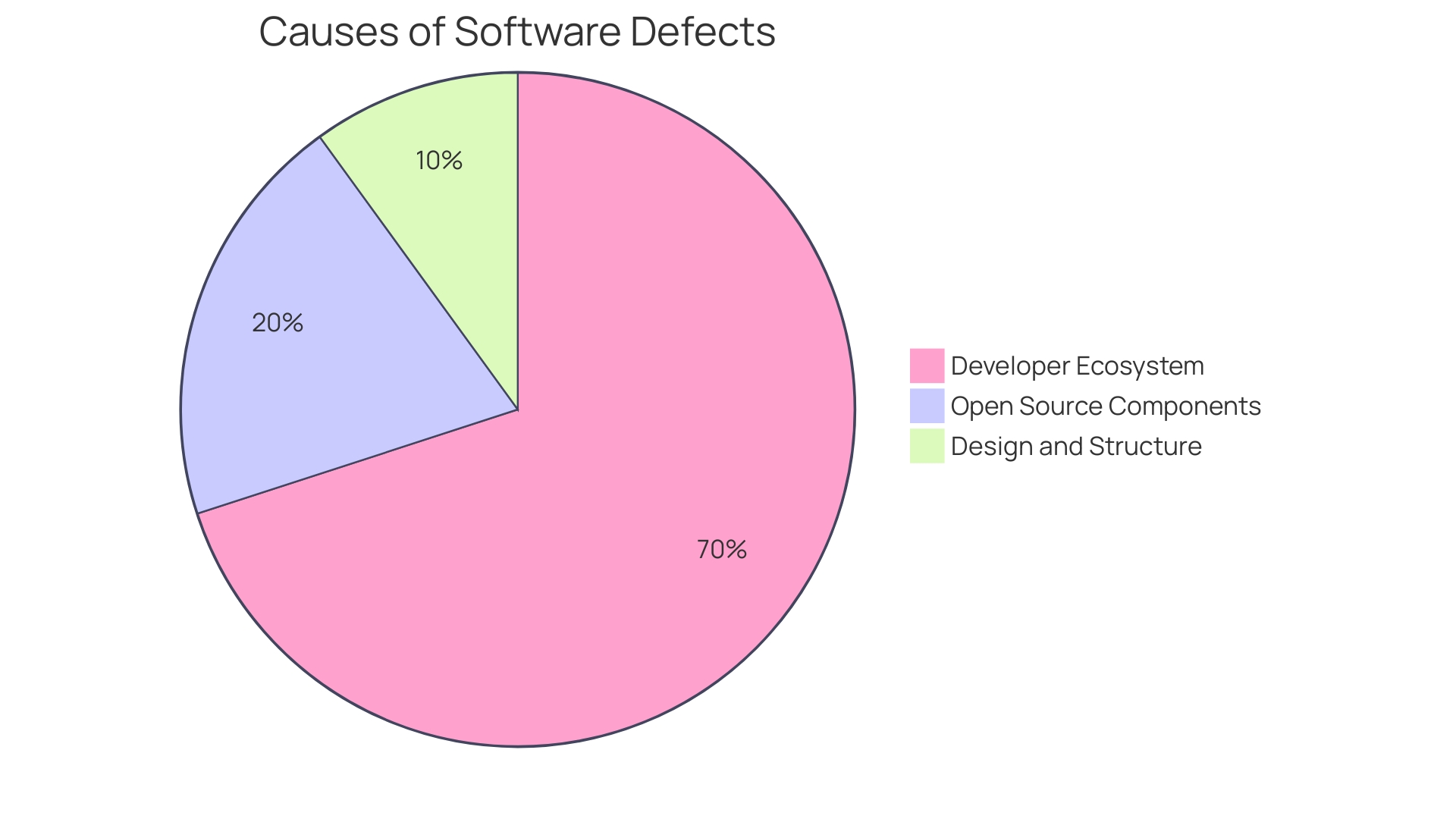
Popular Automated Code Review Tools
Automated code review tools have become essential in the world of software development. Tools like SonarQube, ESLint, Checkmarx, and Code Climate have risen to prominence by offering a robust set of features that effectively analyze code for quality and security issues. These platforms are designed to enforce coding standards, identify bugs, and provide actionable feedback, all of which contribute to maintaining a high standard of code efficiency and readability.
For example, M&T Bank, with its significant history in community-focused banking, faced the challenge of keeping up with the rapid digital transformation in the banking sector. They adopted a Clean Code approach to establish organization-wide coding standards, ensuring their software remained maintainable and performed optimally in a landscape that demands the highest security and compliance standards.
In this age where the introduction of software problems can have dire consequences such as security breaches and financial losses, automated code review tools are not just a luxury but a necessity. They help organizations like M&T Bank minimize maintenance time and costs while keeping their software secure and reliable.
Furthermore, as we see the software development industry at an inflection point with AI innovations like GitHub Copilot and Chat GPT, the need for advanced code review processes becomes clearer. While code generation tools have advanced, the review process must also evolve to leverage Ai's full potential, maintaining the pace of development without compromising on quality.
Incorporating automated code review tools is part of a broader strategy to improve code quality across the development lifecycle. As noted by experts in the industry, these tools can drastically reduce the time and effort required for manual code reviews, which are often slow and prone to errors. By embracing automated solutions, development teams can focus on creating innovative and secure applications that meet the ever-growing demands of the digital world.
How to Automate the Code Review Process
Configuring an automated code review tool is a transformative step in the software development lifecycle, streamlining the review process by integrating with the development environment, defining coding standards, and establishing an effective workflow. This method not only accelerates the review phase but also ensures uniformity in code quality. By automating code reviews, the tedious task of manually scrutinizing code line by line is replaced with a system that can rapidly identify issues and enforce coding best practices, much like how AI advancements such as GitHub Copilot have enhanced developer productivity.
Automated code reviews adhere to predefined coding standards and rules, which are akin to the foundational guidelines that ensure software is secure, maintainable, and interoperable. In doing so, they mitigate the risks associated with non-standard code, which can be challenging to maintain and vulnerable to security threats. As software development evolves with AI, automated code reviews represent a leap forward from traditional methods, echoing industry sentiments on the need for innovative approaches that result in significant performance improvements.
The implementation of automated code review tools is not just about maintaining code quality; it is also about compliance and meeting regulatory requirements. With a clear set of coding standards, the review process becomes more consistent and efficient, allowing developers to focus on broader aspects of their codebase and its impact. As the software industry recognizes the shift towards AI-driven tools, automated code reviews are poised to become an essential component in the modern developer's toolkit, ensuring high-quality code in a more efficient and reliable manner.
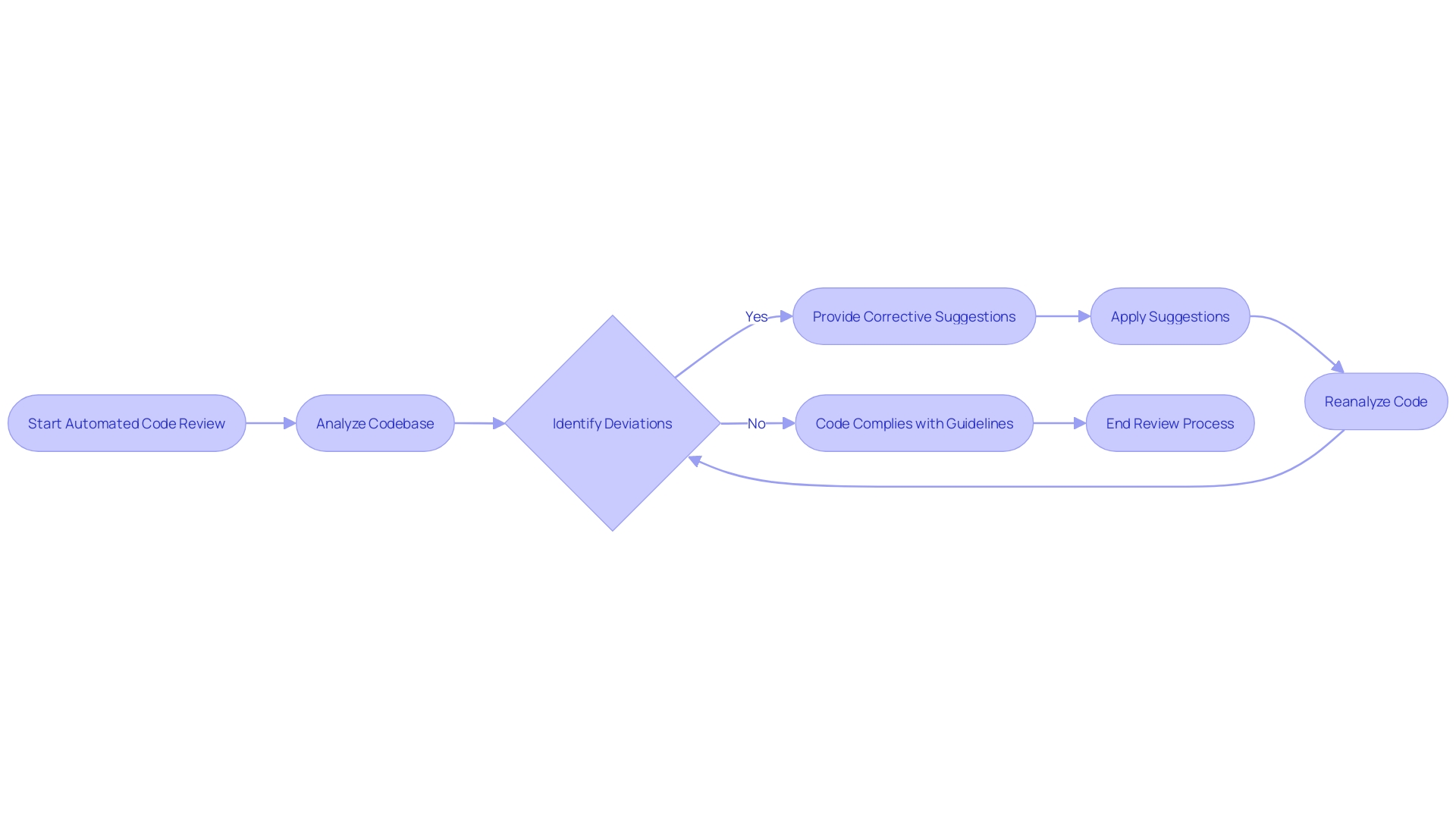
Steps to Implement Automated Code Review
The process of implementing automated code review tools is a game-changer in the software development landscape, which has largely relied on traditional, manual code reviews. To harness the full potential of these tools, one must first identify a tool suitable for the project's unique requirements. It is essential to configure the tool carefully and establish coding standards and rules that ensure code quality and compliance, particularly in industries like banking, where M&T Bank has set a precedent in emphasizing Clean Code standards.
Once a tool is selected, it must be seamlessly integrated into the development workflow. This requires not just technical integration but also a cultural shift within the development team. As every developer has their own coding style and review expectations, it's crucial to cultivate a shared understanding of the review process and its objectives, such as bug detection, adherence to best practices, and learning opportunities.
Moreover, the use of AI in software development, as seen with GitHub Copilot and ChatGPT, offers substantial productivity gains across all developer levels. However, for AI to truly revolutionize the code review process, the development team needs to be well-informed on how to effectively use the tool to reap the benefits of AI suggestions while coding. This education is vital to ensure that the automated code review tool becomes a cornerstone in the development process, improving task time, product quality, and overall developer satisfaction.
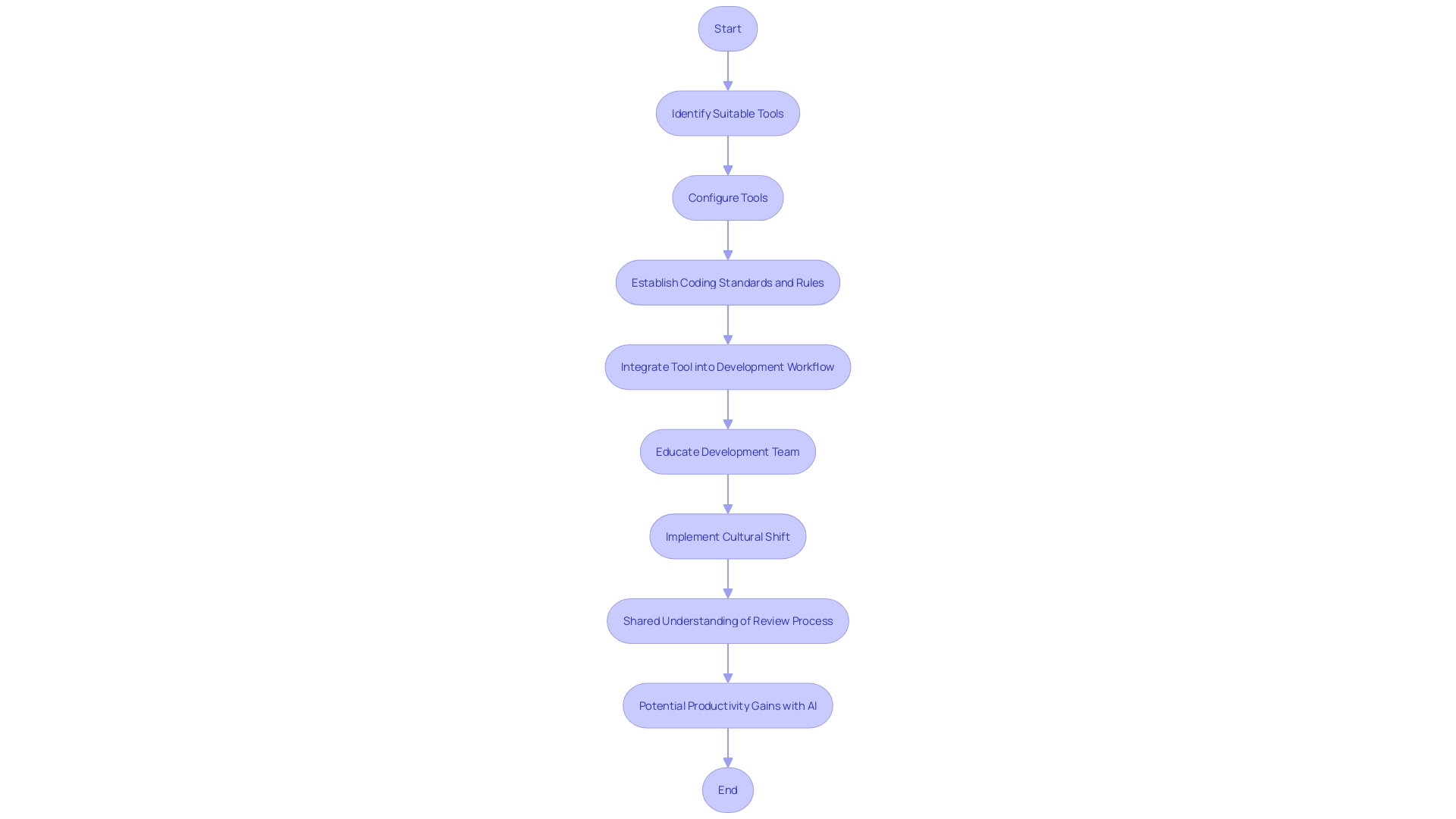
Customizing Code Review Rules and Standards
In the realm of software development, automated code analysis tools are revolutionizing the way code reviews are conducted. The ability to customize these tools to fit the unique requirements of a project is a game-changer. Developers can now define coding standards, prioritize issues based on severity, and even selectively exclude files or directories from the scrutiny of code review.
This level of customization ensures that the analysis is not just a generic assessment but one that aligns perfectly with the project's objectives, enhancing the maintainability and performance of software.
Customization is particularly crucial in industries like banking, where firms such as M&T Bank face the imperative of maintaining stringent quality and compliance standards due to the sensitive nature of their work. In the context of global regulations such as the GDPR, these tools also aid in ensuring that code adheres to the necessary data protection laws, an essential factor given the severe penalties for non-compliance.
Moreover, as the landscape of software development shifts with the introduction of AI-powered tools like GitHub Copilot, the focus on productivity is more pronounced than ever. Automated code analysis tools are proving indispensable, helping developers—regardless of their experience level—to enhance their productivity by offering intelligent code suggestions that span multiple lines and even entire snippets.
As collaboration becomes increasingly digital, the integration of code analysis within teams is facilitated by platforms like Microsoft Teams, where code blocks can be shared and co-edited seamlessly. This fosters a culture of quality within development teams and elevates the standards of the software produced, ensuring that code reviews are not just a formality but a strategic component of the development process.
Integrating Automated Code Review with Development Tools
Merging the power of automated code analysis with development tools such as code editors and version control systems has elevated the coding process to new heights of efficiency. This innovative approach provides developers with immediate insights into the quality of their code, allowing them to make on-the-fly improvements. Furthermore, it streamlines the code review process, fostering better collaboration within the development team.
For instance, M&T Bank, a venerable institution with over 165 years of service, has harnessed this technology to uphold stringent Clean Code standards across its organization, ensuring software reliability and compliance in the fast-paced world of digital banking transformation.
With the banking sector facing immense pressure to adopt digital solutions without compromising on security or regulatory compliance, integration of automated code review tools has become an indispensable asset. These tools assist developers in navigating complex issues ranging from test case failures, code outputs not meeting expectations, to the implementation of new features.
The software development industry is on the cusp of an AI revolution, with tools like GitHub Copilot and ChatGPT reshaping the landscape. Code review processes, traditionally reliant on manual oversight, are being redefined by AI, offering more objective assessments and freeing up developers to focus on more complex tasks.
As we look ahead, the importance of automated quality control is set to increase, with a focus on the chain of custody for code to ensure comprehensive security and efficiency. This shift towards AI-enhanced software development is being embraced by industry leaders, signaling a transformative impact on productivity and the future of coding practices.
Role of AI in Automated Code Review
The software development industry is at a turning point, with AI-driven tools like GitHub Copilot and ChatGPT marking a new era of innovation. Despite rapid advancements in code generation, the code review process has largely stayed the same, still relying on manual, peer-led reviews that are often slow and prone to errors. As software becomes more complex, the traditional line-by-line review method is increasingly inadequate, failing to efficiently detect subtle issues or ensure compliance with evolving standards.
AI-powered code analysis tools offer a transformative solution, employing machine learning techniques to scrutinize code patterns, identify vulnerabilities, and provide precise recommendations. These tools are not just about finding errors; they're also about understanding the intent behind code changes and their potential impact on the larger codebase. The intelligent algorithms behind these platforms can learn from previous reviews, enhancing their capability to analyze and improve code quality over time.
The integration of AI in code review processes signifies a monumental shift, paving the way for more accurate, efficient, and cost-effective software development. As the technology continues to evolve, developers can expect a significant reduction in the time and resources spent on code reviews, allowing them to focus on more strategic tasks. The era of AI in software development is just beginning, and its potential to redefine industry standards is immense.
Future Trends in Code Review Automation
As the software development landscape evolves, so too does the approach to code review. Traditional manual reviews, akin to finding a needle in a haystack, are giving way to automated solutions equipped with the latest in machine learning (ML) and artificial intelligence (AI). As the industry stands at a pivotal moment, with AI tools like GitHub Copilot and ChatGPT changing the game in code generation, the code review process is ripe for transformation.
Automated tools can streamline the code review process, which is fundamental not only to the quality of software but also to compliance and regulatory adherence.
The integration of ML algorithms into automated code review tools can significantly enhance the quality assurance and maintenance phases of software engineering. These advanced algorithms can analyze massive volumes of code to identify patterns and anomalies that may not be immediately evident to human reviewers. Furthermore, these tools can incorporate natural language processing (NLP) to better understand code, providing a more nuanced and comprehensive analysis.
This capability is especially crucial when considering the broader context of a codebase, where changes in one section can have cascading effects elsewhere.
Moreover, automation in code refactoring and optimization represents a significant leap forward in efficiency. With ML techniques such as supervised and unsupervised learning, tools can assist developers by suggesting improvements and identifying potential security vulnerabilities. This not only speeds up the development process but also helps to maintain a high standard of code quality.
According to a study, ML has been increasingly applied to various software engineering domains, including quality assurance and maintenance, making it an essential component of modern development practices. The study highlights the utilization of ML techniques, underscoring the potential for automation to revolutionize software development.
In essence, the future of code review automation lies in embracing these AI and ML-driven innovations, which promise to transform the tedious task of manual code review into a more efficient, accurate, and cost-effective process.
Best Practices for Automated Code Review
To maximize the effectiveness of automated code review, it’s vital to integrate best practices into the process. These include implementing regular tool-assisted reviews, promptly addressing flagged issues, and fostering a collaborative review culture with the whole development team. Moreover, regular refinement of review protocols and maintaining a balance between automated and manual reviews are key.
In the current software development landscape, AI advancements such as GitHub Copilot and ChatGPT have significantly impacted the way code is written, becoming some of the fastest-growing tools ever seen in the industry. However, the code review methodologies have remained stagnant, relying on decade-old practices that are often slow and prone to human error.
M&T Bank, with its rich 165-year history, has faced the digital transformation of the banking industry head-on by prioritizing the establishment of Clean Code standards. This is critical in an industry where digital customer experiences demand top-notch security and compliance to protect sensitive data and transactions.
Starting with a clear objective for the review process is fundamental, whether it's improving code quality, bug detection, adherence to best practices, or team learning. A well-articulated set of coding standards, including naming conventions, formatting, and commenting, can ensure a more efficient and consistent review process. Additionally, providing a readable description at the beginning of a pull request helps reviewers understand the changes, their purpose, and any associated risks without delving into the code immediately.
It’s important to recognize that code review is not just a task but an art that involves the entire team. Developers have varied perspectives on code and expectations from reviews, and sensitivities to feedback differ. Embracing this diversity can enhance the code review process and its outcomes.
As we embrace AI tools that enhance developer productivity, it is crucial to reflect on the review process itself. AI pair-programming tools have demonstrated improvements across various productivity metrics, from task time to product quality for developers at all levels.
By acknowledging the evolution of AI in development and the critical role of effective code reviews, organizations can leverage technology not just for code generation, but also to modernize the review process, thereby ensuring high-quality, secure, and compliant software.
Common Issues Identified by Automated Code Review
Modern software development has embraced AI as a transformative force, with tools like GitHub Copilot and ChatGPT making notable strides in code generation. However, the code review phase has lagged behind, still relying on decade-old practices that are manual, time-consuming, and fraught with errors. Automated code analysis tools are stepping into this gap, offering a solution to rapidly identify a plethora of common coding issues.
These advanced tools can effortlessly pinpoint syntax mistakes, flag potential security breaches, and spot inefficient code patterns. They also excel in detecting code duplication and ensuring adherence to coding standards. This is not just about maintaining code quality; it's about safeguarding the integrity and security of the codebase.
For instance, a recent report by Black Duck Audit Services highlighted that 96% of commercial software contains open source components, with an average of 526 distinct elements in each application. This complexity underscores the necessity of automated security testing over manual methods.
Moreover, with open source projects gaining traction and the number of contributions from first-timers on the rise, ensuring coding standards and security through automation has become even more pertinent. The days of excessive copy/pasting, a bane to long-term code maintainability, are being numbered as automated tools provide a scalable solution to these issues. Indeed, as the software industry reaches an inflection point with the integration of AI, the capacity to effectively review, debug, and improve AI-generated code becomes integral to the development process, underscoring the indispensable role of automated code review tools in the contemporary software landscape.
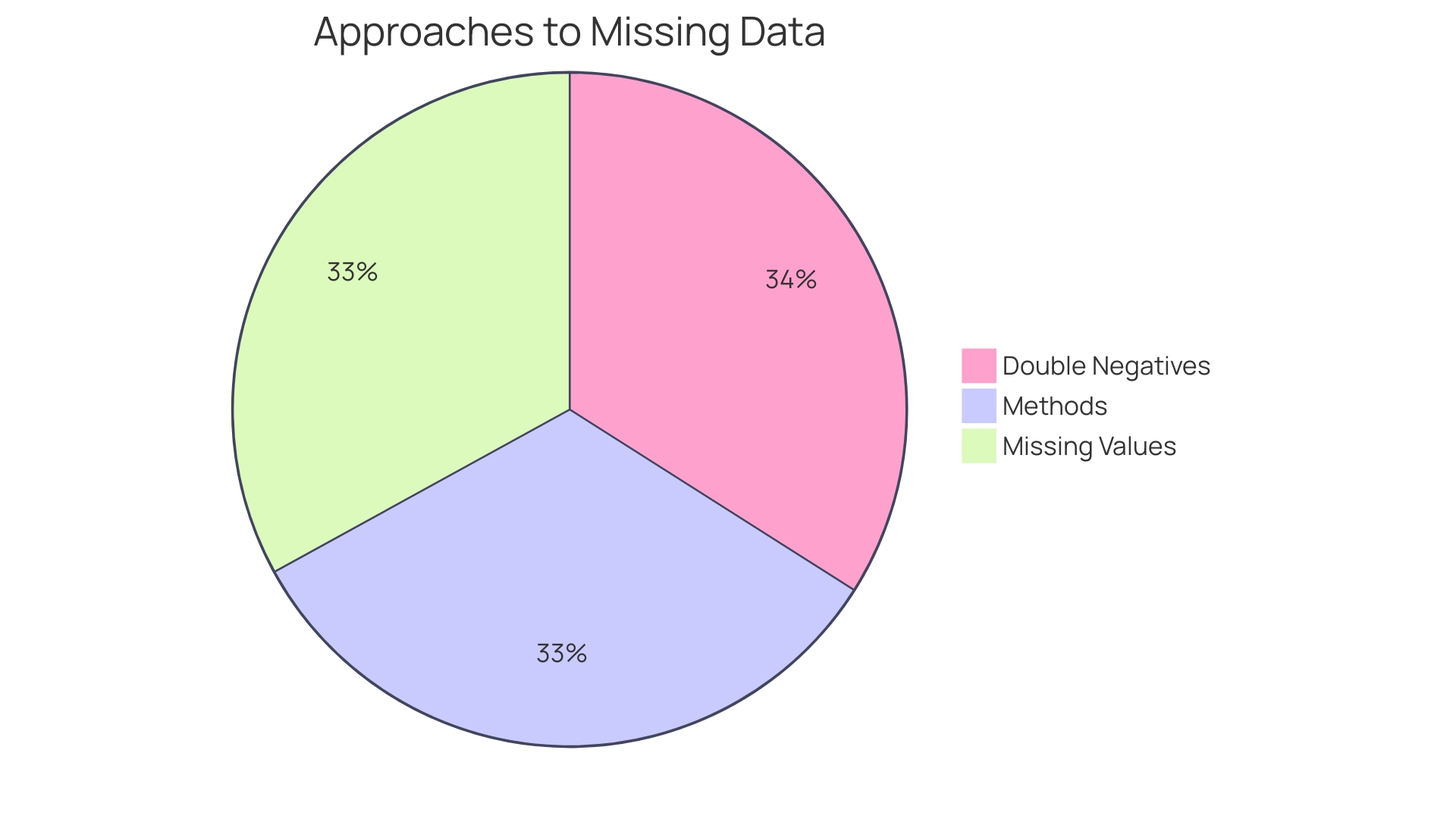
Conclusion
Automated code review tools powered by AI have revolutionized software development. These tools utilize advanced algorithms to identify errors, bugs, and security vulnerabilities with unmatched speed and accuracy. By streamlining the development process and promoting coding standards, they save time and effort for developers.
While AI-driven tools enhance productivity, it is crucial to balance their power with human oversight. AI can sometimes generate incorrect code or introduce vulnerabilities, making human expertise essential. The integration of AI in code review processes aims to maximize efficiency and productivity.
Automated code review tools accelerate the review process, enforce coding best practices, and provide actionable feedback. They streamline the workflow, resulting in robust and reliable software solutions. By leveraging AI-driven tools, developers can achieve maximum efficiency and productivity, enhancing the quality of their software.
In conclusion, AI-driven automated code review tools have become indispensable in software development. They improve code quality, accelerate the review process, and ensure compliance with coding standards. By embracing the power of AI, developers can streamline their workflow and achieve efficient and reliable software development.
Frequently Asked Questions
What is automated code review?
Automated code review is a process where tools analyze code for errors, potential bugs, and security vulnerabilities, offering insights to enhance software quality. These tools use advanced algorithms, machine learning, and AI to review large volumes of code quickly and accurately.
How do automated code review tools benefit software development?
These tools improve efficiency by accelerating the review process and catching issues that might be missed by humans. They enforce coding standards, facilitate collaborative environments, prevent costly errors, and promote software that is robust, secure, and maintainable.
What are some types of automated code review tools available?
There are static analysis and linting tools that examine code without executing it, security-focused tools that look for vulnerabilities, and AI-driven tools like GitHub Copilot and ChatGPT that assist in code generation and review processes.
Can automated code review tools fully replace human reviewers?
No, while they significantly enhance efficiency and accuracy, a balanced approach combining AI's computational power with human oversight is necessary to ensure a clear understanding of the code and to intervene when required.
What challenges do automated code review tools address for developers?
They help with navigating test case failures, managing unexpected code output, extending existing functionalities, and fixing defects, reducing time and effort required for problem-solving.
Are there any limitations to AI in code review?
Yes, AI can sometimes provide incorrect responses or produce code with vulnerabilities. Therefore, it's important to retain human oversight to ensure quality and security.
What is the role of AI in automated code review?
AI enhances the code review process by employing machine learning to identify patterns and vulnerabilities, understand code changes' intent, and improve code quality over time.
How can automated code review tools be integrated into the development process?
Tools can be configured to fit a project's unique requirements, integrated with development environments, and aligned with coding standards and best practices to enhance efficiency and maintain code quality.
What are some popular automated code review tools?
SonarQube, ESLint, Checkmarx, and Code Climate are widely used for analyzing code quality and security issues, each offering a set of features to maintain a high standard of code efficiency and readability.
How can the code review process be automated?
By configuring automated code review tools to adhere to coding standards, rules, and integrating them with development workflows, the process can be accelerated and made more consistent.
What are best practices for automated code review?
Implementing regular tool-assisted reviews, addressing flagged issues promptly, fostering a collaborative culture, refining review protocols, and maintaining a balance between automated and manual reviews are considered best practices.
What common issues do automated code review tools identify?
They identify syntax errors, security breaches, inefficient code patterns, code duplication, and ensure adherence to coding standards, thus maintaining code quality and security.
What future trends are expected in code review automation?
The future of code review automation includes the integration of machine learning algorithms to enhance quality assurance, the use of natural language processing for a more nuanced analysis, and automation in code refactoring and optimization.




